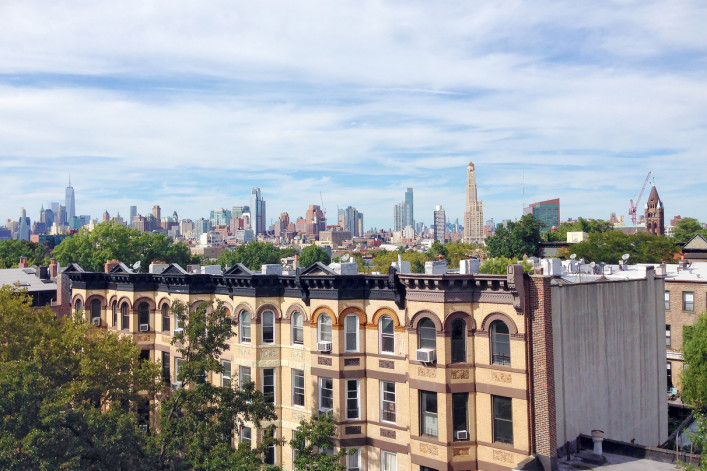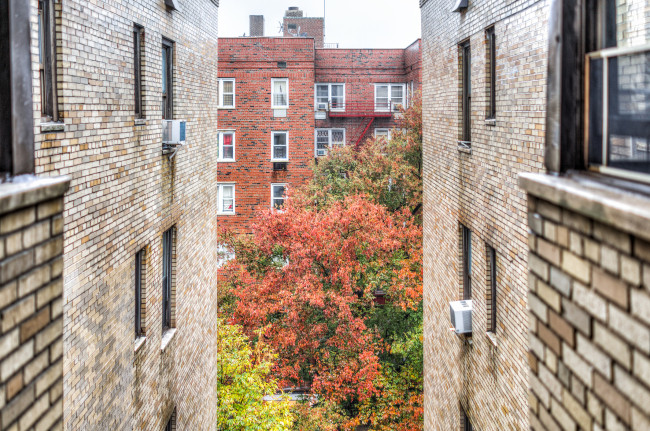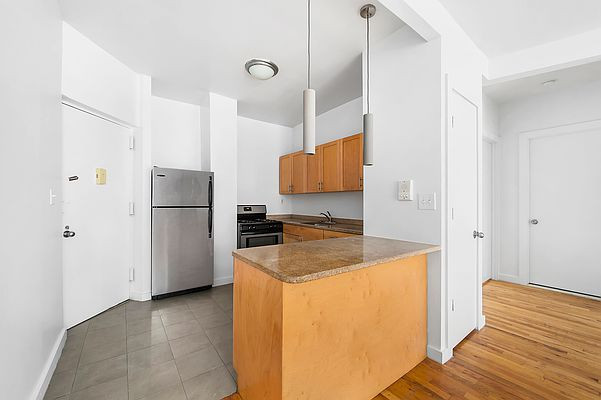I found out my apartment used to be rent stabilized. Here’s how I determined if it was legally deregulated
- My share of the rent in our three bedroom is $1,000. In 1999, the entire unit rented for $676
- I already had my rent history, leaving me with a few options to figure out if it was legally deregulated

If you suspect your apartment is rent stabilized, get your rent report from the New York State Division of Housing and Community Renewal.
iStock
While I had my suspicions that my New York City apartment used to be rent stabilized, I was shocked when I found out my hunch was right. But what was even more surprising was how little the previous tenants paid.
In 1999, a single tenant paid $676 for the entire three-bedroom unit in Crown Heights. In today’s dollars, that’s around $1,224.13—less than I pay for my share of the apartment with two roommates chipping in.
My apartment hasn’t been rent stabilized since 2010, when a previous tenant rented it for $1,528.03, at least according to documents from the New York State Division of Housing and Community Renewal (DHCR). Want to know how you can get your own rent history? Brick has you covered.
[Editor's Note: Brick Underground's Inside Stories features first-person accounts of dramatic, real-life New York City real estate experiences. A previous version of the article ran in July 2023. We are presenting it again in case you missed it.]
But aside from the obscene sticker shock my rent report gave me, it left me with a few burning questions: How was my unit deregulated? Should it still be rent stabilized? Am I overpaying? What should I do now?
There’s nothing more frustrating or enticing to a journalist than a mystery, so of course I dug deeper. My apartment fits the qualifications of a rent-stabilized building—it was built before 1974, there are more than six units, and it's not a co-op or a condo building—and it was previously rent-stabilized. But it’s not on the Rent Guidelines Board’s list of rent stabilized buildings, nor did it benefit from a J-51 tax abatement, which requires landlords to provide rent-stabilized leases to tenants during the duration of the benefit.
After all this research, I still lacked answers. That’s not shocking, given the limited information available to renters about their buildings, said Ronald Languedoc, a partner at the tenant’s rights law firm Himmelstein McConnell Gribben & Joseph (fyi, Brick sponsor).
“If you’re just doing research on your own, you don’t have that much access to information,” Languedoc said. “There’s public information, and I’ve even had tenants hire a private investigator to do research.”
Read on for what you can do, and what I intend to do, to further investigate my building’s rent history.
Check court records
You can head to your borough’s housing court to search through past court cases involving your apartment. Those lawsuits might have useful information tucked away in the city’s public records, Languedoc said.
“I've had clients go to housing court and look up their address in court records, and if there was ever a case filed, they can get the file. It’s a public record,” Languedoc said. “Sometimes there are other documents that would indicate what the rent was, or information about the [past] tenants.”
It’s likely you’ll have to stop by in person to get as much information as possible, as housing court records are not all accessible online, said Sam Himmelstein, a partner at Himmelstein McConnell Gribben & Joseph (a Brick sponsor).
Hire outside help
Himmelstein recommends getting a lawyer who can review your apartment’s rent history, and help you figure out if you should sue.
“A lawyer looks at the rent history and what the applicable threshold [for deregulation] was at the time, and would tell the tenant whether they have a viable claim,” Himmelstein said. “The second question is can they assert that claim, where should they, and how?”
If you do sue, you get the benefit of discovery—a pre-trial process that forces your landlord to turn over relevant evidence and documentation—at least in New York Supreme Court, Himmelstein said. If you choose to take your case to housing court, you have to ask the court for permission for that discovery process. You can also file a case with the DHCR, though there is no live trial component with those cases, Himmelstein said.
Languedoc has also had tenants who’ve hired private investigators to look into their landlord and building history, though this neo-noir fantasy might cost you a pretty penny.
Contact the previous tenant and your neighbors
Your DHCR rent history should include the names of previous tenants who rented your unit, or you can ask your neighbors for a previous tenant’s name.
If you can track them down, you can get additional information on how much rent they actually paid, why they left, and if their landlord made any improvements to the property—which could have caused an apartment to be deregulated before 2019.
At least in my case, there were no significant renovations to my building from 2000 to 2023, according to Department of Buildings records. Instead, my apartment could have been deregulated when the last tenant left in 2011 because the legal regulated rent at that time ($2,286.95) was more than $2,000, the threshold for deregulation at the time. This loophole, called high-rent vacancy deregulation, was outlawed in 2019 by the Housing Stability and Tenant Protection Act —eight years too late for me.
While I certainly would have preferred to have a lower rent, it’s empowering to know that I had the tools to check whether my rent bill was legal. And it’s a bit of a relief to know that I won’t need to square off against my landlord in court.
You Might Also Like































